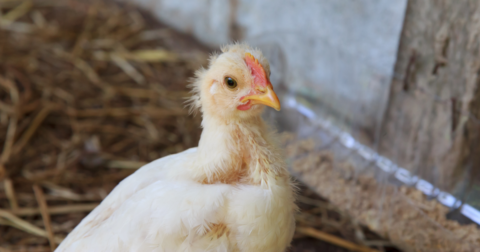Investigation
How Bacon for Breakfast Became an American Staple
Diet•6 min read
Reported
Despite more humane alternatives, the poultry industry continues to use ventilation shutdown to cull millions of birds in the cruelest ways.


Words by Grace Hussain
Taxpayers are footing the bill for avian flu while meat industry profits continue to soar. So far $715 million in government bailouts has been handed to poultry farmers since mid-2022, according to reporting by the Food and Environment Reporting Network or FERN’s Ag Insider and documents shared with Sentient Media. Turkey producer Jennie-O received the largest payment — equaling more than $88.9 million. Rounding out the top three are Tyson — $29.7 million — and Rembrandt Enterprises, Inc. — $27.8 million.
The bailouts were given to compensate the agriculture powerhouses for the flocks they culled to prevent the spread of avian flu, which has been wreaking havoc in farmed and wild bird populations for the last two years. Many of the culled birds were apparently flu-free, killed as a precaution to prevent further spread of the devastating virus.
Payouts were made based on what the U.S. Department of Agriculture determines to be “fair market rate” for the depopulated birds. Even if only one case of avian flu is confirmed, any and all birds exposed are culled too. Total casualties from a single case can reach into the tens of thousands then, due to the sheer size of factory farms and the barns in which birds are housed.
It’s not just shareholders seeing the profits. Corporate executives continue to rake in compensation worth millions, despite the ongoing spread of disease. Tyson’s CEO and President, Donnie King, received a compensation package worth $13.1 million in 2023 and $12 million the year prior.
Instead of reducing corporate profits, the cost of avian flu trickles down to consumers, as the price of eggs creeps upward. At the end of 2022, the average cost of a dozen eggs in the United States passed $4, leading many consumers to cut back, even during the holidays. Meanwhile, the country’s largest egg-producer, Cal-Maine Foods reported record profits in 2023.
Though there was a lull in new avian flu cases and spread in 2023, recently cases are once again on the rise, leading economists to caution that the cost of eggs is likely to creep upward yet again.
The most popular method to cull the millions of birds impacted by avian flu — ventilation shutdown plus (VSD+) — is also one of the cheapest. And according to many veterinarians and animal welfare groups, it’s one of the cruelest.
The USDA allows VSD+ only in constrained circumstances. The agency’s stance on VSD+ is heavily informed by the American Veterinary Medical Association’s depopulation guidelines, which upholds ventilation shutdown as an acceptable means of culling flocks.
“They fill up barns, pump in heat and the animals die slowly via heat stroke and suffer for a prolonged period of time,” Crystal Heath, DVM and spokesperson of the non-profit Our Honor, tells Sentient Media. It’s likely the birds are “conscious for a prolonged period of time before they pass from heat.”
According to a physiological analysis, birds culled using VSD+ likely suffer to an extreme degree — enduring pain, nausea and anxiety in the hours before falling unconscious. The fact that large corporations that get tens of millions in bailouts aren’t spending some of that money to adopt more humane methods is “disturbing”, argues Heath.
Those against using VSD to cull birds argue that it’s not only cruel but also that it’s simply not the most effective way of preventing the spread of disease, as it often fails to reach a 100 percent mortality rate. Those who survive are usually killed by hand using methods like cervical dislocation — they have their necks broken — oftentimes hours later, leaving them to continue spreading avian flu in the interim.
Investigators who visited just a few of many VSD+ depopulated barns at one Rembrandt Enterprises, Inc. facility in Iowa recorded live birds alongside those who were killed, suggesting that across the many barns hundreds of birds likely survived the cull.
There are other options. One example, according to Heath, relies on nitrogen foam. Compared to VSD+, birds culled using nitrogen foam go unconscious and at least die more quickly and with less discomfort. The veterinary industry’s association does include pumping nitrogen gas into barns or filling them with water-based foam as alternatives, yet nitrogen foam is completely absent.
Despite these more humane and effective alternatives, only 5.6 million birds were culled using other methods between February and October 2022. Instead, the poultry industry continues to rely heavily on VSD+ for depopulation — killing over 41 million birds during that same time period.
Update: An earlier version of this story noted $493 million in payouts. An APHIS spokesperson has revealed payouts totaling $715 million. Also, a previous version of this story mentioned “large corporations that get billions,” now corrected to “millions,” and per AVMA guidelines, ventilation shutdown without heat is only acceptable when used on neonates, so “even without the addition of heat” has been deleted.